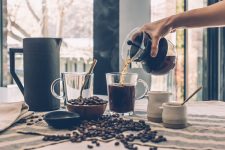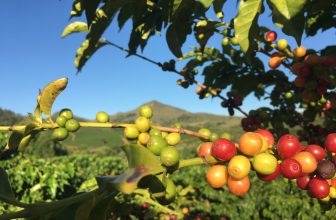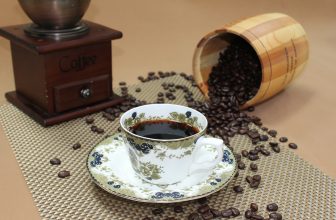Tea and espresso are two beloved beverages with unique characteristics that cater to different tastes and preferences. While tea offers a soothing and diverse range of flavors, espresso provides a bold and concentrated kick of caffeine. Understanding the nuances between these two beverages can elevate your appreciation for both. In this article, we delve into the distinctive qualities of tea and espresso, explore the brewing methods specific to each, and offer tips on achieving the perfect cup. Whether you’re a tea connoisseur or an espresso aficionado, mastering the art of brewing these beverages will enhance your daily ritual and elevate your overall experience.
Introduction to Tea and Espresso
Are you a tea enthusiast or an espresso aficionado? Whichever camp you fall into, get ready to dive into the world of these beloved beverages. Tea and espresso have their own unique characteristics, flavors, and brewing methods that set them apart. Let’s uncover the secrets to making the perfect cup!
Overview of Tea
Tea, a comforting and versatile drink enjoyed across cultures, comes in a variety of types such as black, green, white, and herbal. Whether you savor a soothing cup of chamomile or a bold brew of Earl Grey, tea offers a range of flavors and health benefits that make it a go-to choice for many.
Overview of Espresso
Moving on to the espresso realm, this concentrated shot of coffee packs a powerful punch of flavor and caffeine. Popular in coffee shops worldwide, espresso is the base for a variety of beloved drinks like lattes, cappuccinos, and macchiatos. Get ready to explore the bold and intense world of espresso!
Understanding the Key Differences Between Tea and Espresso
When it comes to tea and espresso, it’s not just about taste preferences – there are key differences in their origin, processing methods, and caffeine content that set them apart. Let’s unravel these distinct elements that make tea and espresso unique beverages in their own right.
Origin and Cultivation
Tea leaves are harvested from Camellia sinensis plants, with variations like Assam and Darjeeling hailing from different regions. On the other hand, espresso is made from finely ground coffee beans, often sourced from regions like Ethiopia, Colombia, or Brazil. The journey from leaf to cup is a fascinating one for both tea and espresso.
Processing Methods
Tea undergoes processing methods like withering, rolling, oxidation, and drying to achieve its distinct flavors. In contrast, espresso beans are roasted to perfection and finely ground before being brewed under high pressure. The intricate processes behind each beverage contribute to their unique tastes and aromas.
Caffeine Content
While tea contains caffeine, the levels can vary depending on the type of tea and brewing method used. Espresso, known for its strong caffeine kick, contains a higher concentration of caffeine per ounce compared to tea. Whether you need a gentle energy boost or a jolt of vitality, the caffeine content in tea and espresso has you covered.
Exploring the Brewing Methods for Tea
Ready to elevate your tea brewing game? From delicate white teas to robust black teas, mastering the art of brewing tea involves understanding the types of tea and the optimal brewing techniques. Let’s embark on a tea-sipping journey that will awaken your senses and delight your taste buds.
Types of Tea and Brewing Temperatures
Each type of tea, whether green, oolong, or herbal, requires specific water temperatures for brewing to unlock its full flavor profile. Experimenting with different brewing temperatures can reveal new nuances and subtleties in your favorite teas. Get ready to explore the art of temperature control for the perfect cup of tea.
Brewing Techniques: Steeping and Infusing
Steeping and infusing are essential techniques in tea brewing, allowing the flavors and aromas to meld harmoniously. Whether you prefer the ritual of a tea ceremony or a quick infusion for a busy day, mastering the art of steeping and infusing will help you create a cup of tea that suits your taste preferences perfectly.
Mastering the Art of Making Espresso
Are you ready to delve into the world of espresso crafting? From selecting the right beans to mastering the intricacies of the espresso machine, making the perfect shot of espresso is both an art and a science. Get your tamper ready as we explore the essential steps to brewing a rich and aromatic shot of espresso.
Espresso Machine Basics
Espresso machines come in various types, from manual lever machines to high-tech automatic espresso makers. Understanding the basics of how these machines work, including water temperature control and extraction pressure, is key to pulling a flawless shot of espresso. Get to know your espresso machine inside out for barista-level results.
Grinding and Tamping for the Perfect Shot
Grinding your coffee beans to the right consistency and tamping them evenly into the portafilter are crucial steps in the espresso-making process. Achieving the perfect shot of espresso requires precision and practice, as the grind size and tamping pressure greatly influence the flavor and crema of the final brew. Get ready to hone your grinding and tamping skills for espresso excellence.
Tips for Achieving the Perfect Cup of Tea
Water Quality and Temperature
When making tea, use fresh, filtered water for the best flavor. Water temperature is crucial; different types of tea require specific temperatures to bring out their unique flavors. Green and white teas are best brewed at lower temperatures, around 175-185°F, while black and herbal teas can handle hotter water between 200-212°F.
Brewing Time and Steeping Recommendations
The brewing time varies depending on the type of tea. Oversteeping can result in a bitter brew, while under-steeping may leave the tea flavorless. Follow steeping recommendations for the specific tea you are preparing. Generally, delicate teas like white and green should steep for 1-3 minutes, black teas for 3-5 minutes, and herbal teas for 5-7 minutes for optimal flavor.
Techniques for Crafting the Ideal Espresso Shot
Espresso Shot Timing and Crema
The perfect espresso shot should extract in 20-30 seconds, resulting in a balanced flavor profile. A creamy, golden layer on top, known as crema, signifies a well-extracted shot. Adjust grind size, tamping pressure, and extraction time to achieve the ideal shot consistency.
Milk Frothing for Espresso-Based Beverages
For espresso-based drinks like lattes and cappuccinos, mastering milk frothing is essential. Steam milk to a velvety microfoam consistency by placing the steam wand just below the milk’s surface and creating a whirlpool motion. Properly frothed milk enhances the texture and taste of your espresso beverages.
Pairing Tea and Espresso with Food
Tea Pairing Suggestions
Pair light and floral teas like jasmine or green tea with sushi or salads. Stronger black teas complement hearty dishes like grilled meats or sandwiches. Consider the tea’s aroma, body, and flavor profile when pairing with food to enhance both the tea and the meal.
Espresso and Dessert Pairing Ideas
Espresso’s bold flavors make it a perfect match for rich desserts like tiramisu or chocolate cake. The strong, concentrated nature of espresso serves as a counterbalance to the sweetness of desserts, creating a harmonious pairing. Experiment with different espresso-based drinks to find your ideal dessert companion.
Conclusion: Enhancing Your Tea and Espresso Experience
Mastering the art of brewing tea and crafting espresso opens up a world of flavors and experiences. Experiment with different brewing methods, explore new tea varieties, and perfect your espresso shot techniques to elevate your tea and coffee rituals. Whether you prefer a calming cup of tea or a bold espresso kick, savoring each sip with attention to detail can turn a simple beverage into a luxurious indulgence. Cheers to enhancing your tea and espresso experience!
In conclusion, whether you find solace in a comforting cup of tea or delight in the robust flavors of espresso, the key to a perfect brew lies in understanding the nuances of each beverage and mastering the respective brewing techniques. By following the tips and recommendations outlined in this article, you can elevate your tea and espresso experience, savoring every sip with enhanced appreciation. Embrace the distinctiveness of tea and espresso, experiment with different brewing methods, and pair them thoughtfully with complementary foods to truly immerse yourself in the world of these timeless beverages.








